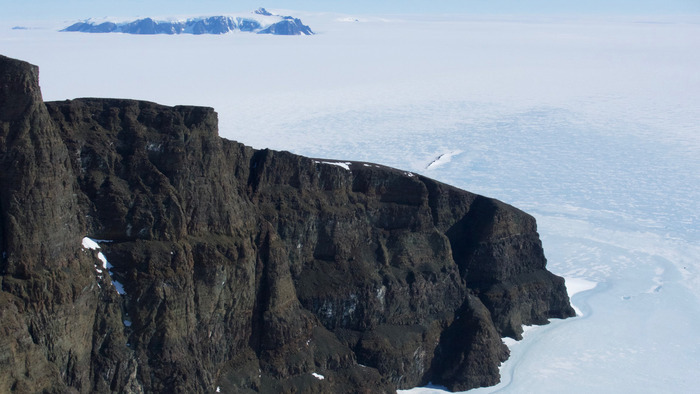Heinonen uses geochemical modeling tool to show magma floods erupt from deeper sources than earlier believed
 Large magma eruptions have produced great floods of basalt lava on the continents during Earth’s history. Conventionally, the largest flood basalt eruptions are thought to be possible only in regions where the continental tectonic plates are unusually thin, so that deep mantle material can rise close to the Earth’s surface. In such low-pressure environments, the melting of the hot mantle can generate very large amounts of magma.
Large magma eruptions have produced great floods of basalt lava on the continents during Earth’s history. Conventionally, the largest flood basalt eruptions are thought to be possible only in regions where the continental tectonic plates are unusually thin, so that deep mantle material can rise close to the Earth’s surface. In such low-pressure environments, the melting of the hot mantle can generate very large amounts of magma.
A new study by researchers from the University of Helsinki and Aarhus University challenges this widely held view.
"The idea that flood basalt eruptions generally require melting of the mantle under low-pressure conditions is largely based on the trace element compositions of the erupted magmas", explains Dr. Jussi Heinonen, University of Helsinki, the lead author of the recent Journal of Petrology article describing this study.
He specifies further that the relative amounts of rare earth elements in many flood basalts point to magma formation in the presence of low-pressure mantle minerals.
Support from supercomputing
The new study was carried out as part of a research project focusing on the origin of flood basalts that erupted in southern Africa and Antarctica when these continents were attached as parts of Pangaea some 180 million years ago.
"We became curious about the occurrence of most flood basalts in regions where the African and Antarctic tectonic plates are thick rather than thin", describes Dr. Arto Luttinen, leader of the University of Helsinki team. "Moreover, we found that many flood basalts that have rare earth element compositions, suggesting high-pressure formation conditions, are located in thin regions of the tectonic plates."
The idea of an alternative hypothesis started forming after the team discovers a type of flood basalt in Mozambique that shows compositional evidence for exceptionally high eruption temperatures.
"These flood basalts made us consider the possibility that melting of exceptionally hot mantle could lead to the formation of high-pressure magmas with trace element features similar to those of low-pressure magmas", adds Ph.D. student Sanni Turunen from the University of Helsinki.
The researchers decided to test their hypothesis using the geochemical modeling tool REEBOX PRO, which enables realistic simulation of the behavior of minerals, melts and their trace element contents during mantle melting.
"We were thrilled to find out that the simulations supported our hypothesis by predicting total consumption of garnet, a diagnostic mineral of high-pressure conditions when mantle melting occurred at the high temperatures indicated by the flood basalts", says Dr. Eric Brown, Aarhus University, a co-author of the article and one of the developers of the REEBOX PRO tool.
Magmas formed at high pressure can thus chemically resemble low-pressure magmas when the mantle source is very hot. Furthermore, the results indicated the survival of garnet at relatively low pressures when a different kind of mantle source was selected for the modeling.
"Our results help us to understand the apparent controversy between the occurrences of southern African and Antarctic flood basalts and their trace element characteristics. Most importantly, we show that voluminous flood basalts can form in regions of thick tectonic plates and that the trace element compositions of flood basalts are unreliable messengers of magma generation depths unless the influences of mantle temperature and composition are accounted for", the authors conclude.

 How to resolve AdBlock issue?
How to resolve AdBlock issue?